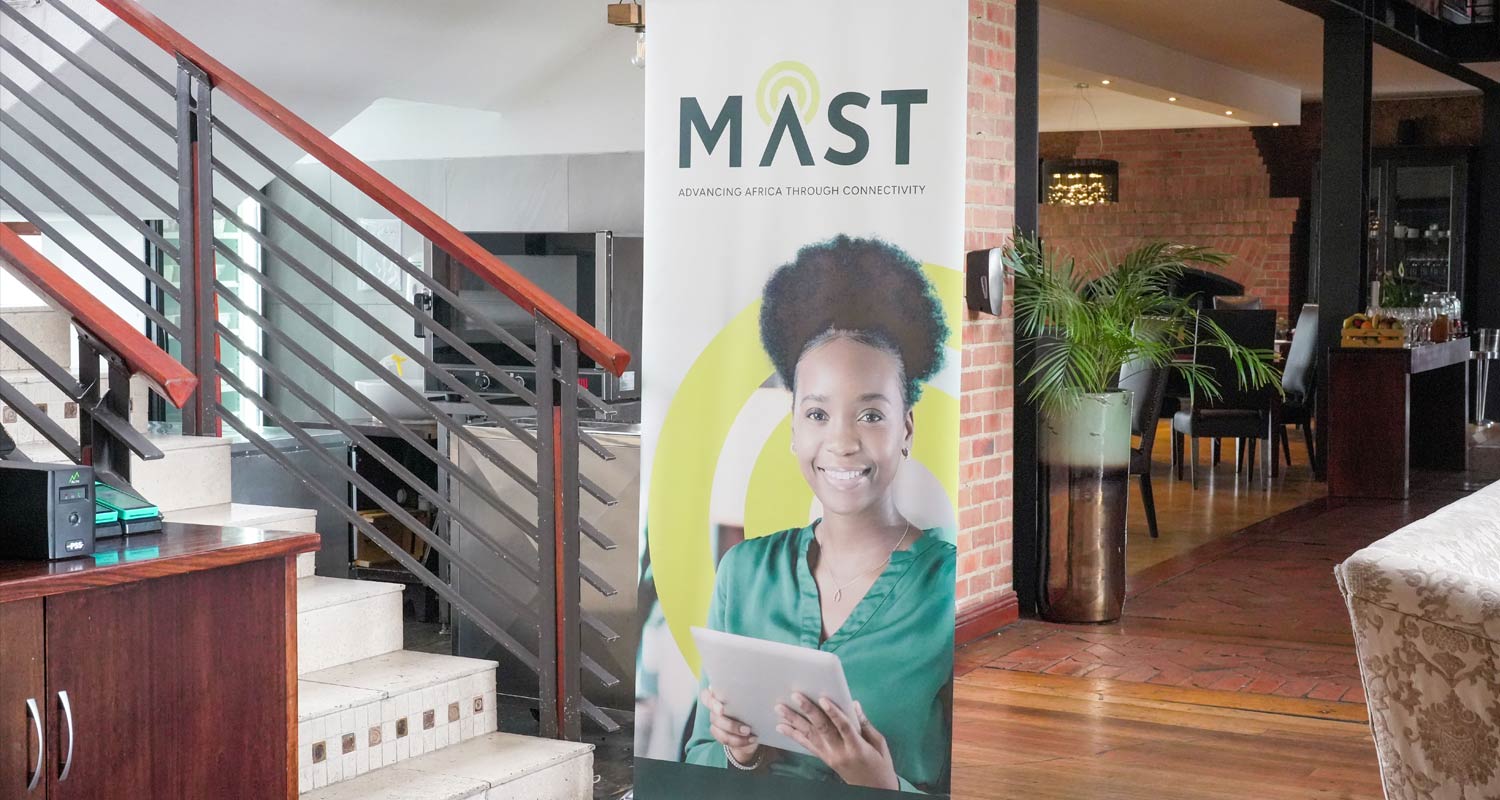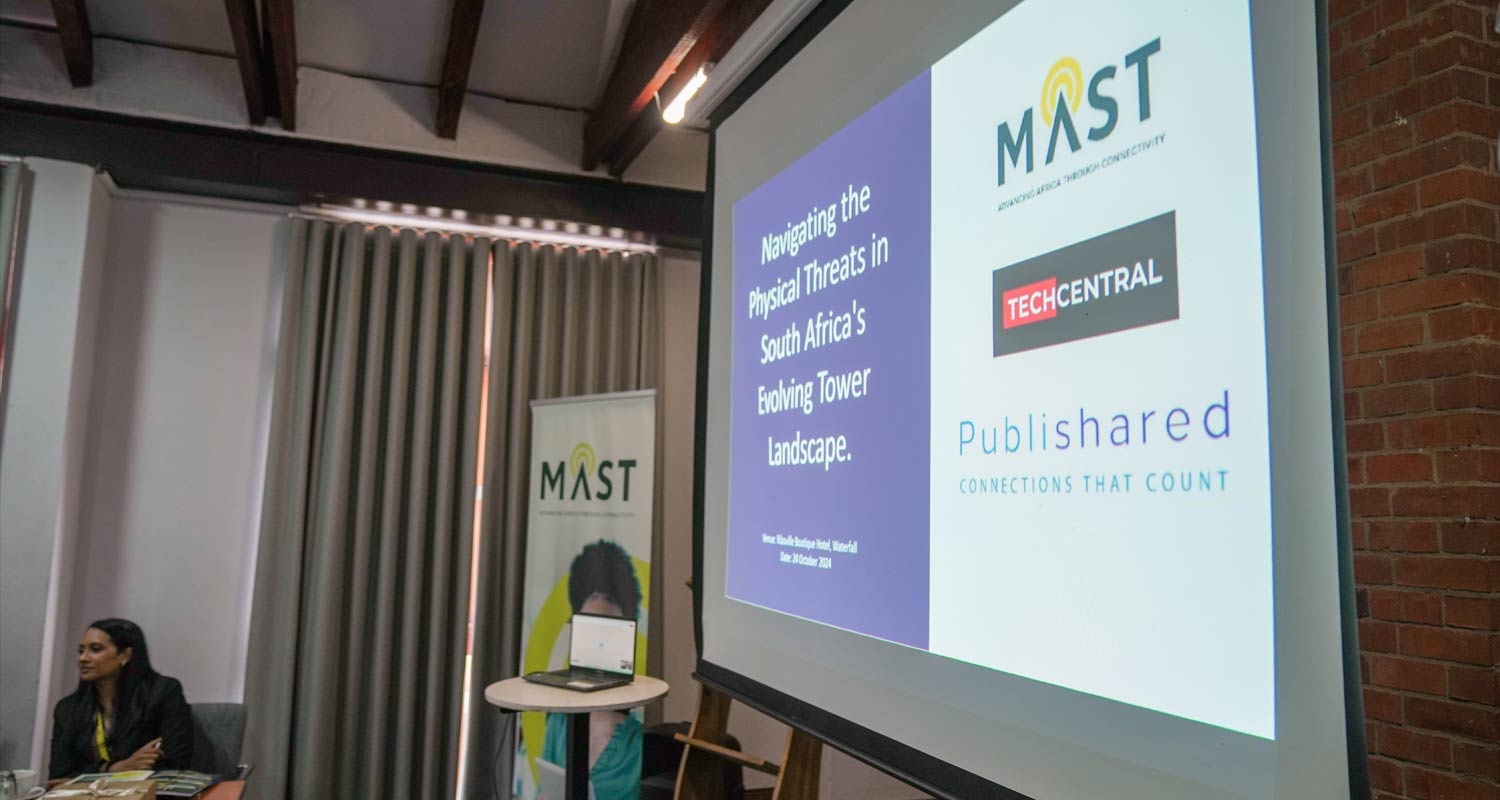 South Africa’s telecommunications infrastructure faces mounting threats from theft and vandalism, putting telecoms sites in increasingly vulnerable positions.
South Africa’s telecommunications infrastructure faces mounting threats from theft and vandalism, putting telecoms sites in increasingly vulnerable positions.
As highlighted in recent security studies and white papers, these crimes disrupt network availability and have a ripple effect across society, hindering economic growth and impacting essential services.
Both rural and urban areas feel the repercussions, as disruptions to communications networks affect the socioeconomic fabric, creating obstacles for everything from local business operations to emergency services and daily connectivity needs.
Recognising the urgency of these challenges, MAST, in partnership with TechCentral, recently hosted a round-table discussion bringing together key stakeholders to unpack the rising physical security threats facing South Africa’s telecoms towers.
Participants gathered to explore insights, share experiences and examine potential solutions, with the goal of fostering discussion that could strengthen the industry’s approach to security through shared understanding and appropriate strategic partnerships.
Identifying perpetrators of theft and vandalism
Participants shared perspectives on the main drivers of theft and vandalism at tower sites, identifying several distinct groups:
- Organised crime and syndicates: Industry representatives pointed to increasingly organised crime networks that resemble South Africa’s construction mafia. These syndicates operate in various regions, targeting specific high-value items like batteries for cross-border trade or reselling items like cables to local and regional markets. Notably, the cross-border demand for these items often sees them transported to neighbouring countries like Mozambique and Zimbabwe, amplifying challenges in containment and recovery.
- Opportunistic local criminals and youth-driven theft: Some incidents were attributed to local criminals and youth involvement, driven by factors such as unemployment and substance abuse. Although these groups were noted as less organised, they are unpredictable and can contribute to sporadic incidents.
- Value chain contributors: Concerns were raised about broader ecosystem players, such as scrap metal dealers, who purchase stolen materials and indirectly fuel the crime cycle. Additionally, some subcontractors may play a role by providing intelligence or, if terminated, may become perpetrators themselves. The round table highlighted that these dynamics make it essential to view security through a comprehensive ecosystem lens rather than isolated incidents.
The discussion also highlighted the fluidity of crime, with hotspots shifting as security measures are implemented. Areas with nearby cross-border access, such as Kwa-Zulu Natal, Mpumalanga and Limpopo, were identified as particularly vulnerable. Participants stressed the need for dynamic strategies to address these challenges.
 Collaboration as a solution
Collaboration as a solution
Recognising the challenges as shared, participants largely agreed that no single entity could tackle the problem alone. However, opinions varied on the feasibility and practicality of collaboration.
While many agreed that physical security should not be treated as a competitive differentiator, some industry players are seen to leverage it indirectly due to competitive pressures. This is particularly true where downtime due to theft or vandalism impacts network availability and customer satisfaction.
Success stories from past collaborations, such as efforts following the 2021 riots, demonstrated that the industry could effectively mobilise in times of crisis. However, participants expressed the view that current efforts remain largely reactive rather than proactive, and a structured framework for collaboration would allow for sustainable, long-term improvements.
Many expressed a desire to create an industry model where tower sites are jointly protected. By sharing in security investments and response efforts, co-located mobile network operators (MNOs) could better distribute risks and resources, allowing for a unified approach to securing critical infrastructure.
Practical approaches to information sharing
The conversation around practical collaboration highlighted that information-sharing practices need careful management, especially given strict competition regulations.
Participants explored creating a dedicated framework that would allow them to share critical security intelligence without compromising competitive positioning. The concept of establishing an independent security information body, like the role of Sabric in the banking industry, was discussed as a potential solution. Such a body could aggregate, anonymise and analyse security data from multiple operators, producing shared insights without revealing sensitive business information. This could provide towercos, co-locating MNOs and law enforcement valuable intelligence while adhering to competition guidelines.
Another suggestion was to share high-level data, such as crime hotspots or regional incident trends, with private security firms and law enforcement to improve regional preparedness and response capabilities.
Role of public authorities
The group reviewed current collaborations with public authorities, like MTN’s partnership with the Gauteng Police Board and Telkom’s work with the South African Police Service, which have shown promise in mitigating infrastructure crimes.
The SAPS’s support varies regionally, but participants noted its effectiveness in certain areas where local police are well-informed on the impact of these crimes. However, gaps exist, particularly at the prosecution level, where participants called for more severe penalties for crimes targeting critical infrastructure. Participants stressed the importance of diligent follow-up on reported cases and advocated for expanding collaboration and stronger partnerships with the National Prosecuting Authority (NPA) to ensure successful prosecution and appropriate sentencing.
 Enhanced cross-border cooperation, especially with authorities in Mozambique and Zimbabwe, was also recommended. By strengthening international cooperation, participants believe they can reduce cross-border transport and the sale of stolen goods, which fuels the crime cycle.
Enhanced cross-border cooperation, especially with authorities in Mozambique and Zimbabwe, was also recommended. By strengthening international cooperation, participants believe they can reduce cross-border transport and the sale of stolen goods, which fuels the crime cycle.
Immediate next steps and recommendations
The discussion concluded with participants sharing ideas on several key steps to drive collaboration forward:
- Ecosystem approach: The discussion emphasised the need to move beyond site hardening and address the broader ecosystem, including intelligence sharing on syndicates and crime hotspots.
- Redefining tower company roles: Participants called for towercos to assume a more proactive role in security, potentially through risk-sharing models, coordinated response teams, or becoming the first line of defence.
- Comric as a framework: Leveraging the Communication Risk Information Centre (Comric) to facilitate structured information sharing and collaboration, potentially modelled on Sabric’s successful approach in the banking industry
- Developing a pilot for collaborative security: Participants recommended starting with a small-scale collaboration pilot, focusing on high-impact areas with a loose structure that could avoid bureaucratic delays. This pilot would allow stakeholders to test collaborative measures, such as coordinated security responses, shared intelligence gathering and response team support across co-located sites.
- Community engagement and education: Recognising the socioeconomic context of the crimes, attendees highlighted the need to communicate the broader impact of infrastructure damage on local communities. By reframing the narrative to emphasise the societal and economic losses these crimes cause, MNOs and tower companies could mobilise local support and foster community partnerships to help deter criminal activity.
- Expanding key stakeholder involvement: To sustain momentum, participants agreed that future discussions should include additional stakeholders such as the Competition Commission, community leaders and private security firms. This broader group could then work collectively to build a sustainable intelligence-sharing framework and crime prevention framework.
The round-table discussion created a valuable dialogue on the critical issue of physical security threats to telecoms infrastructure. Participants acknowledged the shared responsibility for addressing these challenges and underscored the importance of proactive collaboration, structured intelligence-sharing and strategic partnerships with law enforcement. By engaging with a broader range of stakeholders, and implementing pilot initiatives, the group expressed optimism about evolving industry practices and working together to secure South Africa’s telecoms infrastructure.
MAST and TechCentral thank all those who participated in the round-table discussion.
- Read more articles by MAST on TechCentral
- This promoted content was paid for by the party concerned

